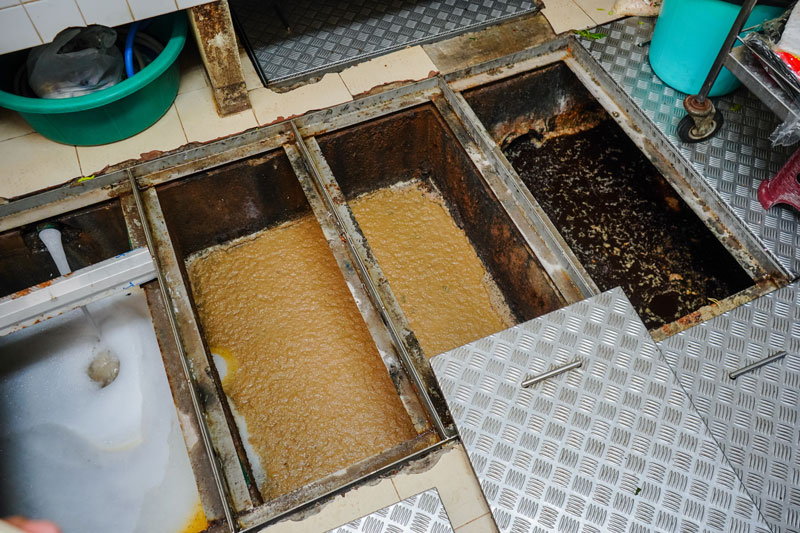
Need Grease Trap Replacement? Contact Us!
Grease Trap Replacement
San Diego is known for its vibrant culinary scene, with numerous restaurants and food establishments serving delicious meals every day. Behind the scenes, however, these establishments face the challenge of managing the buildup of grease and fats from their kitchen operations. Grease traps play a vital role in preventing grease from entering the wastewater system and causing blockages or environmental harm. Over time, these grease traps may require replacement to ensure their optimal functionality and compliance with regulations.
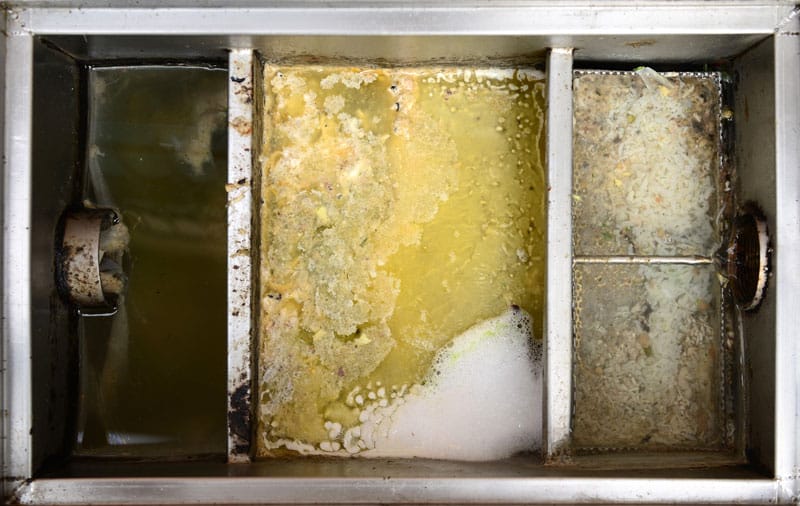
What is a grease trap?
A grease trap, also known as a grease interceptor, is a plumbing device designed to capture and separate grease, oils, fats, and solids from wastewater before it enters the municipal sewer system.
It prevents these substances from solidifying and clogging pipes, thus reducing the risk of costly plumbing issues and environmental damage.
Grease traps are particularly crucial in commercial kitchens, where large amounts of grease are generated daily.
Signs You Need A New Grease Trap
DON’T IGNORE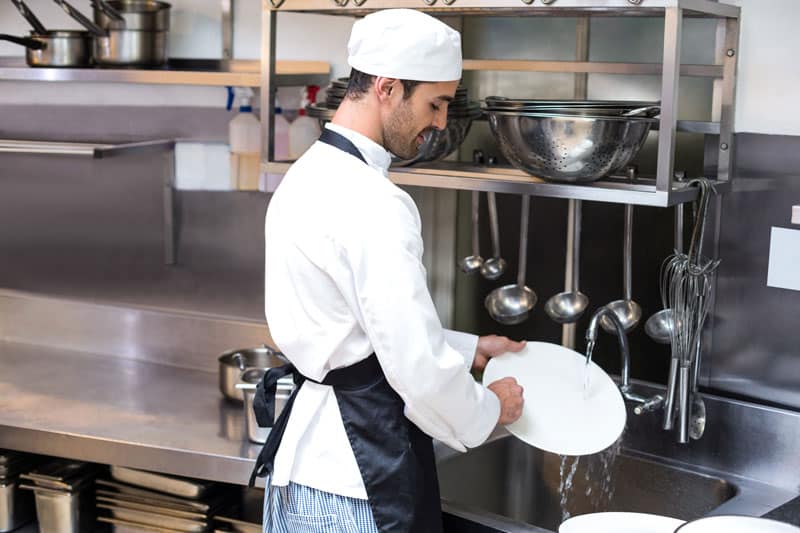
Over time, grease traps can become worn out or damaged due to factors such as regular usage, aging, or lack of proper maintenance. It is important to be aware of the signs that indicate a grease trap replacement may be necessary. Some common signs include:
- Persistent foul odors
- Slow drainage
- Excessive grease buildup
- Recurring clogs
If you notice any of these signs, it is essential to address the issue promptly to prevent further complications.
Importance of grease trap replacement
Grease trap replacement is vital for maintaining a healthy and efficient plumbing system. A failing grease trap can lead to backups, foul odors, and potential environmental hazards.
By replacing a worn-out grease trap, you ensure the smooth operation of your kitchen and minimize the risk of costly repairs or penalties from regulatory authorities. Moreover, a properly functioning grease trap contributes to the overall sustainability of San Diego’s wastewater treatment infrastructure.
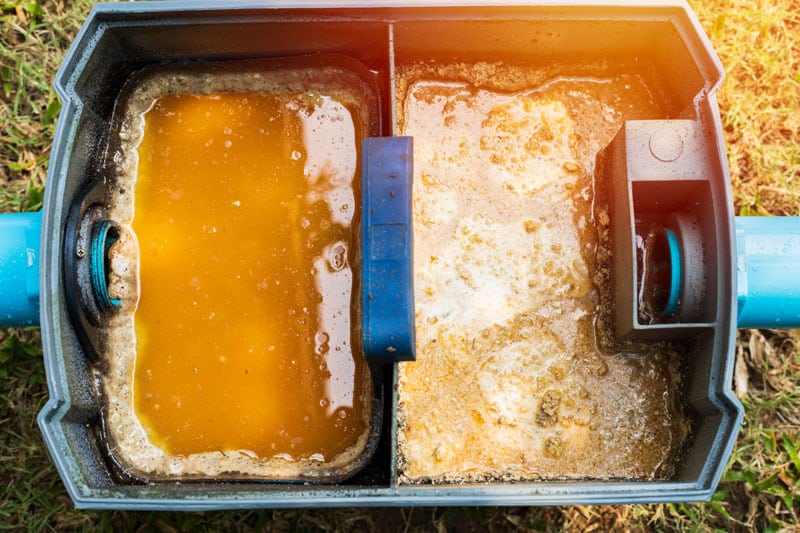
The Process Of Grease Trap Replacement
Our ProcessGrease trap replacement involves several steps to ensure a seamless transition from the old trap to the new one.
The process typically begins with a thorough inspection of the existing grease trap to assess its condition and determine the appropriate replacement size and type.
Once the replacement trap is selected, the old grease trap is removed, and the plumbing connections are adjusted accordingly.
Finally, the new grease trap is installed and tested for proper functionality.
Grease Trap Maintenance
KEEP YOUR GREASE TRAP FUNCTIONING PROPERLY- Schedule regular inspections: Arrange for professional inspections to ensure the trap is clean, free from debris, and operating efficiently.
- Implement proper cleaning practices: Train staff to scrape plates and utensils before washing to minimize grease entering the trap. Dispose of grease and food waste in designated containers.
- Use environmentally friendly cleaning products: Avoid using harsh chemicals that can damage the trap or harm the environment. Opt for biodegradable and eco-friendly cleaning solutions.
- Maintain proper water flow: Ensure that sinks and drains are properly maintained to prevent any blockages or backups in the grease trap.
- Keep accurate records: Maintain a record of inspections, cleanings, and maintenance activities as evidence of compliance with local regulations.
Grease Trap FAQ
FREQUENTLY ASKED QUESTIONS- How often should a grease trap be replaced?
The frequency of grease trap replacement depends on various factors, such as the type of trap, usage patterns, and maintenance practices. Generally, a well-maintained grease trap can last anywhere from 10 to 20 years. However, regular inspections by professionals can determine the appropriate time for a replacement based on the trap’s condition. - Can I clean the grease trap myself instead of replacing it?
While regular cleaning is necessary for maintaining a grease trap, complete replacement is sometimes unavoidable. Cleaning alone may not address underlying issues such as structural damage or excessive wear and tear. It is recommended to consult a professional to determine if replacement is necessary rather than relying solely on cleaning. - Are there any regulations regarding grease trap replacement?
Yes, there are regulations in place regarding grease trap maintenance and replacement. Local authorities and wastewater management agencies often have specific guidelines that businesses must follow to ensure compliance. It is important to consult these regulations and work with professionals who are knowledgeable about the local requirements to avoid any legal or regulatory issues. - What are the common signs of a failing grease trap?
Several signs indicate a failing grease trap. These include persistent foul odors emanating from drains or sinks, slow drainage or backups, excessive grease buildup in the trap, and recurring clogs. If you notice any of these signs, it is advisable to seek professional assistance to assess the condition of the trap and determine if replacement is necessary. - How long does a grease trap replacement take?
The duration of a grease trap replacement can vary depending on factors such as the size of the trap, the complexity of the installation, and any additional plumbing adjustments required. Typically, a professional service can complete the replacement within a day or two. However, it is recommended to consult with the service provider to get an accurate estimate based on your specific requirements.
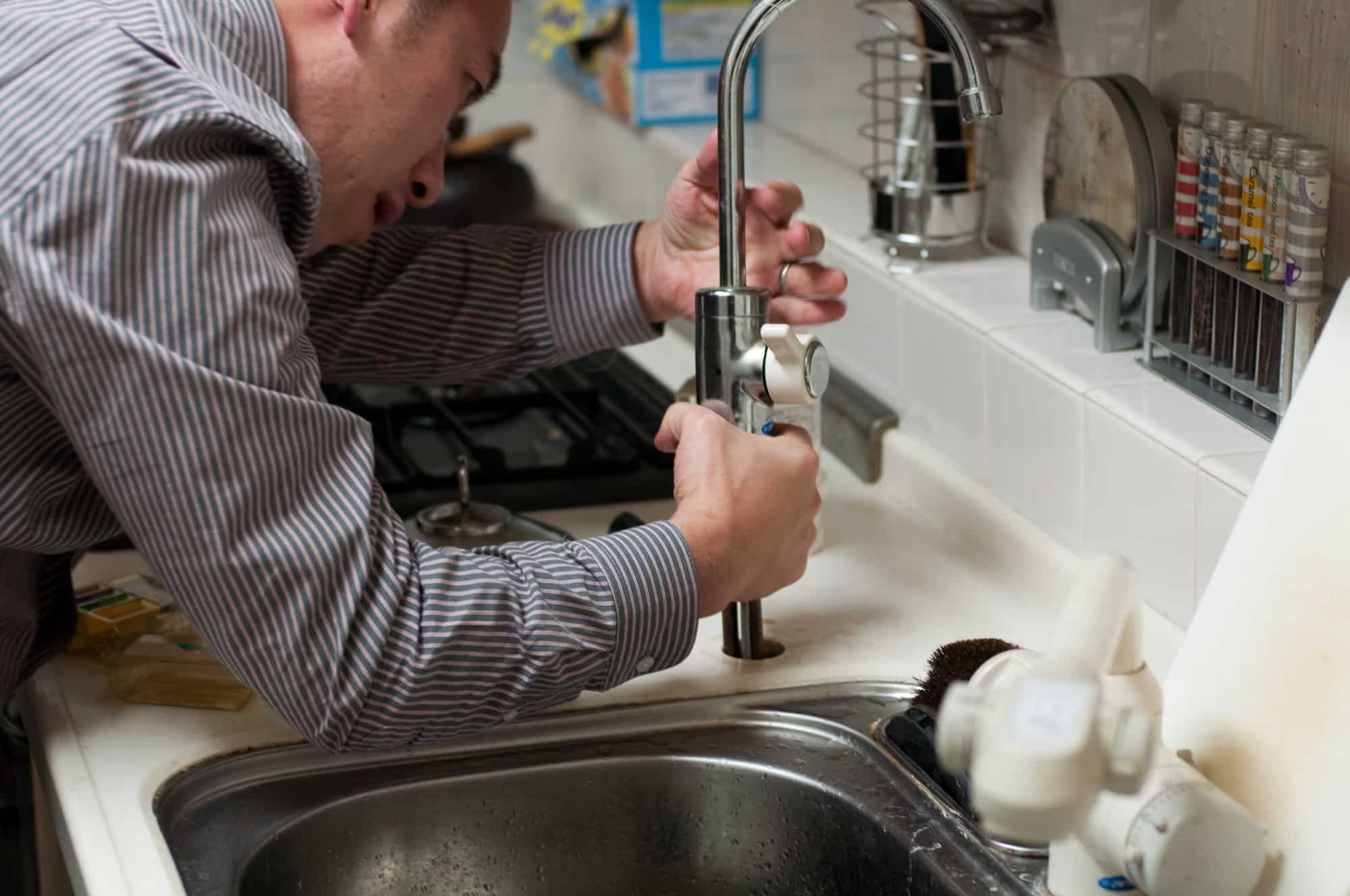
Choose Hack’s Plumbing & Drain
ALWAYS ON TIME & ON BUDGETHack’s Plumbing & Drain is a family-owned and operated fully licensed and insured business, we treat our clients as family.
We will never oversell you or do a repair that is not necessary our goal is to have you as a client for years to come.
We grew our business based on customer referrals. Give us a call today and experience the Hack’s Plumbing & Drain difference.

NEED AN EXPERIENCED GREASE TRAP PLUMBER?
CONTACT USFrequently Asked Questions We Receive at Hack’s Plumbing
Why are grease traps necessary for commercial kitchens?
Grease traps are required in most food service establishments to prevent FOG from clogging pipes and municipal sewage systems. Without them, FOG can lead to significant plumbing issues and environmental hazards, which may result in fines or shutdowns
How often should a grease trap be cleaned?
It’s recommended to clean a grease trap at least every three months, but high-volume establishments may need more frequent cleaning, depending on the buildup of FOG. Waiting until the trap is 25% full is a good rule to prevent overflow and keep systems functioning properly
What types of grease traps are available?
There are several types of grease traps, including passive (manual) grease traps, automatic grease removal units, and gravity-based traps. The right type depends on the kitchen’s size, volume, and specific needs
Can I clean my grease trap myself?
While small traps can sometimes be cleaned manually, professional cleaning is recommended for larger units. Professionals use specialized equipment to fully remove accumulated FOG and clean the trap, which helps prevent clogs and odor issues
What are the consequences of not cleaning a grease trap?
Neglecting to clean a grease trap can result in clogs, foul odors, and potential backups into the kitchen. Long-term neglect may lead to plumbing damage and even fines from health or environmental agencies
How do I know if my grease trap is full?
Signs that a grease trap is full include slow drainage, foul odors, and grease accumulating in kitchen fixtures. Regular inspections help determine the need for cleaning before problems arise
Are there specific regulations regarding grease traps?
Yes, local health and environmental codes often require grease traps in commercial kitchens, with guidelines on installation, maintenance, and FOG discharge limits. Non-compliance can lead to penalties, so regular maintenance is crucial

